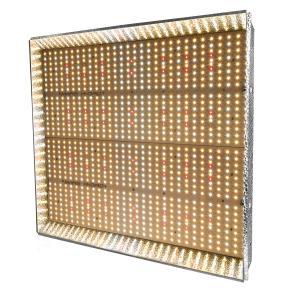Infrared light is part of the electromagnetic spectrum. Technically, it is outside the range of light visible to the unaided human eye. However, infrared waves affect how plants grow.
Photosynthetically active radiation (PAR) is the spectral range (wave band) from blue to red light. The spectral range of solar radiation from 400 to 700 nanometers is the range of light that photosynthetic organisms are able to use most efficiently in the process of photosynthesis. PAR is discussed in more detail in this post.
Infrared wavelength and spectrum position
On the far end of the spectrum (>700nm) you find far-red and infrared (IR) wavelengths of light. These light wavelengths are long and have very little energy. Also, wavelengths in this range are not visible to the human eye and can only be felt as heat. Blue and red light is optimal for plant development, but research conducted in 1957 has improved our understanding. The research showed that combining blue light and red light with far-red/infrared light (700-760nm) led to an increased rate of photosynthesis. This was named The Emerson effect. The only known receptor that is sensitive to far-red/infrared wavelengths is the protein Phytochrome. Plants use Phytochrome to regulate when to switch from the vegetative state to flowering. The length of daylight or exposure to artificial light also affects the time of flowering.
The Emerson Effect
In 1957, Robert Emerson discovered that infrared light boosted photosynthesis when combined with other wavelengths. Emerson’s primary observations included:
- There are two chemical procedures that contribute to photosynthesis, known as PS1 and PS2.
- Plants exposed to blue and red light along with with far-red and infrared light show an increase in photosynthesis. On the other hand, photosynthesis is stalled when these wavelengths are absent.
- The plant protein phytochrome absorbs red, far-red and infrared wavelengths; this protein is responsible for regulating flowering.
Conclusion
Far-red and infrared light is very effective at promoting robust stem growth, proper node spacing, and more flowers and fruit. However, the majority of IR radiation is felt as heat and too much can cause damage. Therefore, too much IR radiation can cause plants to stretch, leaf discolouration or even kill plants. A grow light with the appropriate amount of IR is key for healthy and natural plant growth.

